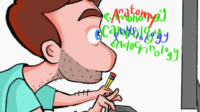Preparing for your board exam is a significant milestone in your professional career. Although the pressure to perform well can be intense, utilizing the right strategies is essential. Whether you’re memorizing complex terminology or trying to master new concepts, the right approach can transform your study sessions from stressful to successful.
Finding Your Learning Style
Discovering your unique study style is a game-changer on your learning journey. Whether you thrive by doing (tactile), listening (auditory), or seeing (visual), understanding how you learn best allows you to tailor your study habits for maximum impact. By identifying your preferred approach, you can choose strategies that make studying more effective and enjoyable.
To identify your learning style, think back on past learning experiences to determine which methods helped you retain information most effectively. When have you performed the best? You might also take online assessments designed to pinpoint your learning preferences.
Study Tips for Tactile Learners
Tactile learners learn best by doing, and by taking a hands-on approach. Study methods that are more tactile, like flashcards, can help you retain information better than simply reading or listening to a lesson.
- Find a fidget: tactile learners may be easily distracted during class due to their need to engage. Try using a quiet fidget device to keep your hands engaged during lectures and discussions.
- Actively engage: if you are a tactile learner, try to actively engage in discussions and find ways to apply what you’ve learned to activities.
- Incorporate movement: Study while walking or pacing, or use a standing desk. Physical movement can help you process information more effectively.
The BoardVitals mobile app lets you take your studying on the go. Access question banks and prepare for the boards anytime, any place, even without internet access!
Study Tips for Auditory Learners
If you’re an auditory learners, you’ll learn best by listening to lectures and discussions. While reviewing notes from lectures and discussions, try reading them aloud. Hearing your notes out loud may help you memorize information better than reading alone. And even better; recording a lecture or discussion may help auditory learners study class material. Use a good recording device during class and listen while you review notes.
BoardVitals question banks include detailed explanations for correct and incorrect answers. Try reading them aloud to help reinforce the information as you study!
Study Tips for Visual Learners
Visual learners grasp information best through images, diagrams, and visual aids. Use charts, graphs, and mind maps to organize and understand complex ideas.
- Color-code your notes: Enhance your note-taking by using different colors for different topics or themes. This can help you quickly locate and recall information during study sessions.
- Create visual summaries: Summarize chapters or topics by creating infographics or visual summaries. This can help reinforce your understanding and make it easier to review later.
- Watch videos: Supplement your learning with educational videos or documentaries related to your subject. Seeing concepts in action can enhance comprehension and retention.
- Use flashcards with images: When using flashcards, incorporate images or symbols alongside text to create a stronger visual connection with the material.
BoardVitals question banks include detailed illustrations, annotated diagrams, tables, and charts to help you visualize complex topics.
Understanding and leveraging your unique learning style can significantly enhance your board exam preparation. By tailoring your study techniques to align with how you learn best, you can improve retention, reduce stress, and boost your confidence. Remember, the key to success lies in adopting strategies that resonate with you personally.




